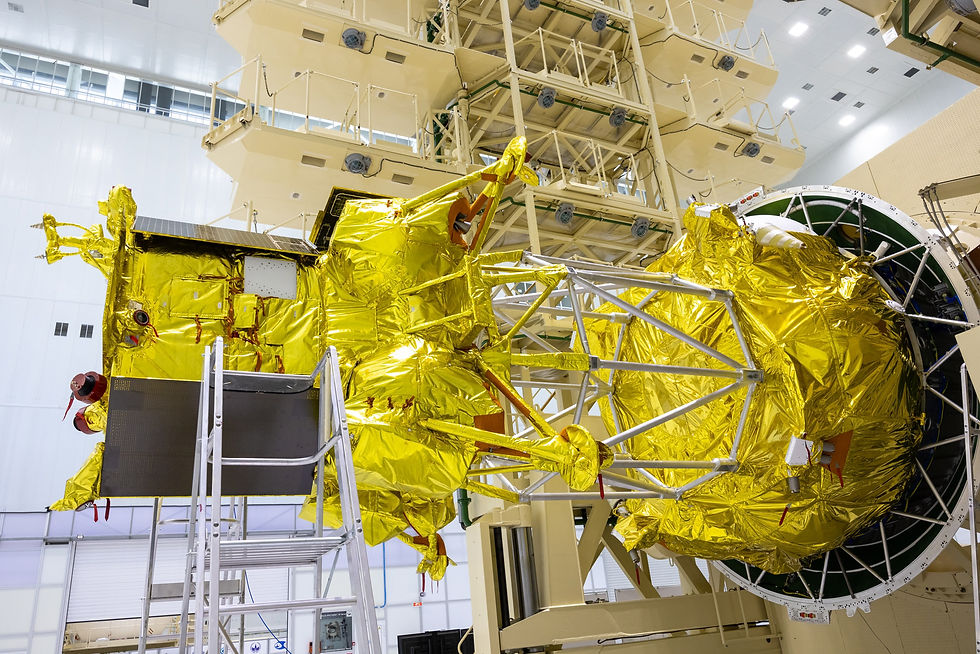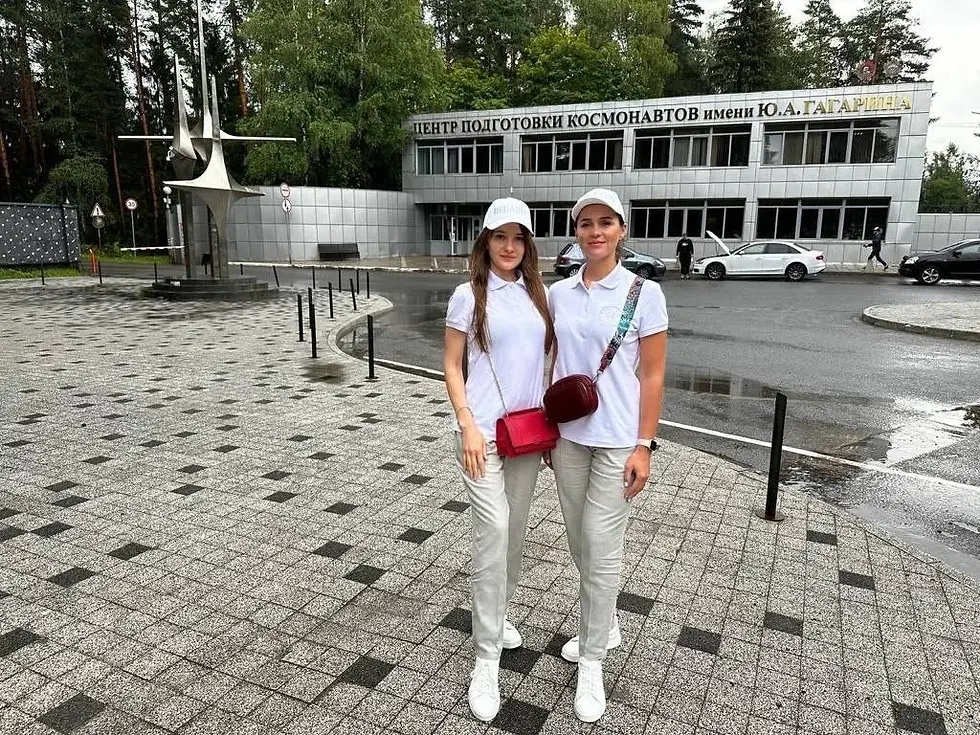Russia launches an Iranian satellite and cubesats from Baikonur tomorrow
- Karthik Naren
- Aug 8, 2022
- 5 min read
Rumors indicate that 'Khayyam' would spy on certain zones

A Soyuz-2.1b rocket is installed at Launch Complex 6 at Area 31 of the Baikonur cosmodrome with Iran's Khayyam remote sensing spacecraft and sixteen small "rideshare" satellites. The launch of the rocket with the Islamic Republic of Iran spacecraft and a group of 38 satellites from eighteen countries is scheduled for August 9, 2022 at 11:52:38 am Nur-Sultan time (05:52:38 UTC, or 01:38 am EDT). "The Soyuz-2.1b rocket with the Khayyam spacecraft was transferred this morning at 07:30 local time by rail from Assembly and Test Building 40 (MIK 40) and installed on the No. the cosmodrome media last Friday. The satellites must be placed in a 500 km circular sun-synchronous orbit, inclined at 97 degrees to the equator.
The pre-launch work is being carried out as per the contract of the company Glavkosmos and carried out jointly by representatives of Roskosmos customers and subsidiaries – the rocket factory RKTs Progress, NPO Lavochkin, builder of the Fregat stage and the ground infrastructure center TsENKI.
According to the press office of the administration of the locality of Inta of the Komi Republic in the Russian Federation, in connection with the launch of the rocket, it is possible for the parts of the launch vehicle to fall, as well as the occurrence of natural fires in the territories of Pechora, Inta, Usinsk and Vorkuta.

Rumors of Iranian Satellite Use in Ukraine Conflict
However, there is suspicion in the Western media that the Iranians may not be able to take control of the satellite immediately. Russia, which has been investing to achieve its military targets during its five-month invasion of Ukraine, reportedly told Tehran it planned to use the satellite for a few months or more to beef up surveillance of military installations in the conflict, two Russian officials said under anonymity due to the secrecy involved in intelligence gathering. The Russian Embassy in Washington declined to comment. The Biden administration is closely following Iran's satellite research, which is developing an increasingly powerful missile fleet. Government officials declined to comment on the launch or Moscow's intentions to use the satellite to monitor battlefields in Ukraine.
But last week, the Iranian Space Agency said no country would use its satellite imagery for military purposes, according to Iranian state agency IRNA. Before that, the American newspaper The Washington Post claimed that Russian authorities were preparing to launch a satellite by order of the state, but will use it for several months to monitor military targets in Ukraine. The Iranian agency noted that these reports are not true. “The sending of commands and the receipt of information from this satellite will be carried out entirely with an encrypted algorithm already embedded in it by the researchers of the space organization, and in this process no other country will be able to access its information. This satellite is not intended for military use by other countries.” The agency also stated that all orders related to the management and operation of Khayyam will be organized and transmitted immediately after the launch by Iranian experts located at the bases of the Ministry of Communications and Information Technologies in Iran. Earlier, the US said it saw no signs that Russia was buying drones from Iran, despite early allegations that Russian officials were planning to do so. Before that, British newspaper The Times said that Russia was attacking satellites in Earth orbit and interfering with the transmission of GPS signals used by aircraft, ships, cars and smartphones. The Washington Post also reported that Russia is not delivering 400 leased passenger planes for Western companies, and the aircraft's rightful owners doubt they can get them back.
As associated payload are sixteen small Russian-made spacecraft: CubeSX-HSE2, CYCLOPS, MIET-AIS, Polytech Universe 1, Polytech Universe 2, ReshUCube-1, Siren, Skoltech B1, Skoltech B2, UTMN, VIZARD-SS1, Geoscan- Edelweiss, ISOI, KAI-1, Kuzbass-300, Monitor-1. "Russian spacecraft are designed for scientific and technological research, including the development of technologies for implementing communication channels between satellites, measuring the level of electromagnetic radiation, remote sensing the Earth and monitoring the environmental situation," the state corporation said.
“Together with Khayyam it is planned to launch the associated small Russian satellites – CubeSX-HSE-2, Monitor-1, UTMN, CYCLOPS, Siren, KAI-1, Kuzbass-300, Skoltech-B1, Skoltech-B2, Polytech Universe-1 , Polytech Universe-2, Vizard, Geoscan-Edelweiss, MIET-AIS, ISOI and ReshUCube,” announced Roskosmos. The small satellites were created at Peter the Great Polytechnic University of Saint Petersburg, at the Baltic State Technical University Voenmeh DF Ustinov, at the Research Institute of Nuclear Physics DV Skobeltsyn, at Tyumen State University, at the State University of Science and Technology MF Reshetnev from Siberia and other universities, as well as at Geoscan, Sputnix and other organizations:
Aerospace Capital’s deployment systems provide the ability to quickly and reliably integrate satellites for the launch missions; satellite separation in orbit at low angular speeds, cost-effective launch opportunities and flexibility to adapt to atypical satellite interfaces
1. ReshUCube-1. Siberia State University.
The payload is a remote sensing camera; a “reconfigurable space laboratory” (a suite of sensors and ERI, possibly a continuation of the Yubileiny program).
2. Kuzbass-300 SXC3-218 KUZSTU by KuzGTU.
Chassis: OrbiCraft-Pro SXC3.
The payload is a remote sensing camera (forest fire detection), and a voice and image message transmission equipment.
Chassis: OrbiCraft-Pro SXC3.
The payload is AIS and KINEIS equipment, for tracking ships and other objects in the Arctic Ocean.
4. SXC3-21? UTMN. Tyumen State University.
Chassis: OrbiCraft-Pro SXC3.
The payload is a remote sensing camera for studying oil spills in the Arctic.
5. CUBESX-HSE-2. NRU HSE.
The payload is a remote sensing camera and AIS equipment. Land surface monitoring in the Arctic region, following the movement of ships along the Northern Sea Route. It is also equipped with a VERA plasma electric motor.
6. SIREN SXC3-217. NRU BelGU.
Chassis: OrbiCraft-Pro SXC3.
The payload is a module consisting of a capsule with lilac buds fixed with a special nutrient gel solution, as well as cameras and LEDs.
7. KAI-1 – KNITU-KAI, LLC “NILAKT DOSAAF”, YEAR DPO KIRO )
The payload is panoramic cameras, a temperature gauge based on a fiber Bragg network, a 145/435 MHz repeater (indicative of called RS26S).
8, 9. Polytech Universe-1, Polytech Universe-2. School of Applied Physics and Space Technologies of the Institute of Electronics and Telecommunications (SPbPU).
The payload is equipment for monitoring the level of electromagnetic radiation on the earth's surface in different frequency bands.
10. Geoscan-Edelweiss from the company @Geoscan.
Chassis: Geoscan 3U.
The payload is an OKB Fakel gas engine and an Elvis GNSS receiver.
11, 12. MCA Skoltech B1, MCA Skoltech B2. Skoltech Space Systems Laboratory, SINP MSU. The main task of satellites is to develop long-distance inter-satellite communication technology, which will later be applied in the detection of gamma-ray flashes with calculation of triangulation of their direction.
The payload comprises
• inter-satellite communication module;
• gamma detectors developed by the NIIYaF MGU;
• Visible spectrum cameras for remote sensing of the Earth.
13. CYCLOPS SXC3-2110. BGTU Voenmekh DF Ustinov.
Chassis: OrbiCraft-Pro SXC3.
Its payload comprises
optical device stabilization and positioning;
observation of the earth's surface;
study of the properties and efficiency of the energy storage device;
development of technical solutions for creating a lunar rover;
study of the degradation of material characteristics and parameters of electronic devices in outer space.
14. SXC3-214 MIET-AIS (MIET).
Chassis: OrbiCraft-Pro SXC3.
The payload is AIS equipment and a VERA plasma electric motor.
15. SXC3-219 ISOI (ISOI RAS), Medex, reported from SAU
Chassis: OrbiCraft-Pro SXC3.
The payload is a remote sensing hyperspectral camera.
16. Monitor-1 (NIIYaF MSU).
Chassis: OrbiCraft-Pro SXC3.
The payload is a combined radiation detector (KODIZ).
After closing the 11T11P1 service towers around the rocket on the platform, experts from Russia's space industry began work on the first-day launch program. “Within three days, experts will carry out final checks on the launch complex and launch vehicle systems,” official media said. The day before, on August 4, Roskosmos technicians completed the general assembly of the Soyuz-2.1b launcher, with the so-called “package” of the first and second stages being joined to the third stage block and the head section, in which the Fregat upper stage and spacecraft were integrated under the fairing.








































Comments